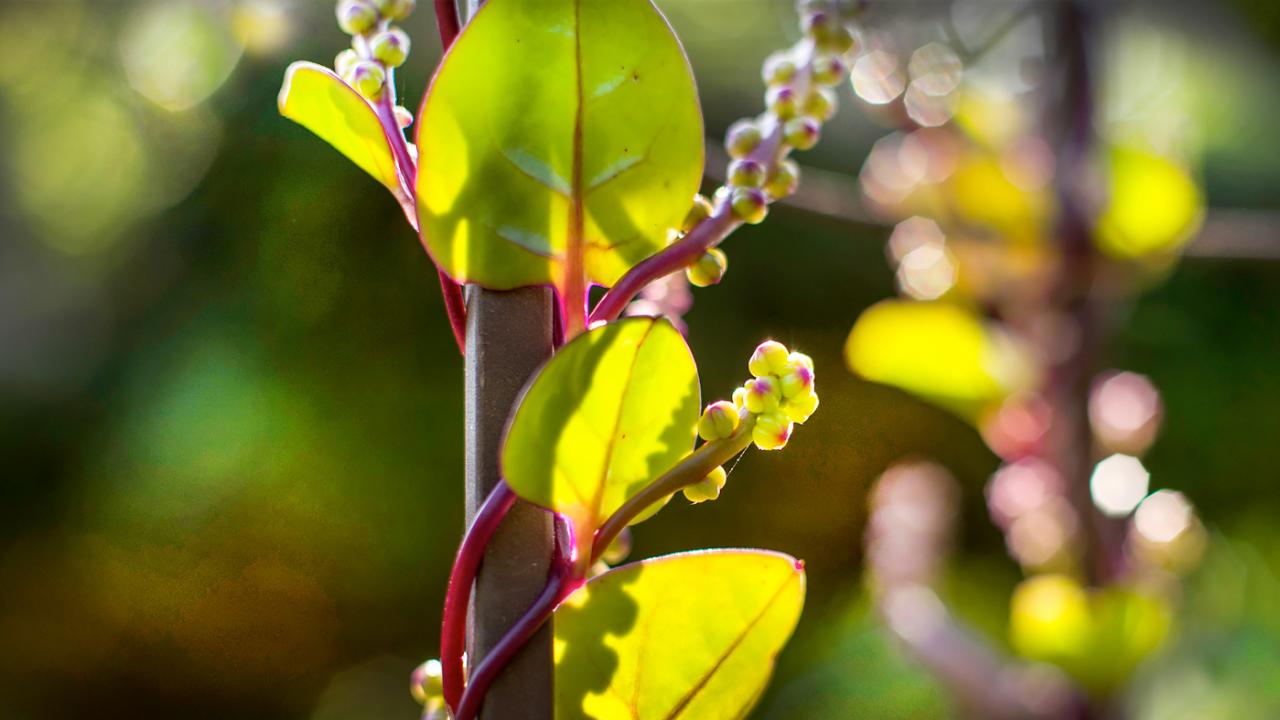

Plants & Gardening
Garden Stories
Fall color means blue squash and pink pumpkins, too
Color theory states that orange radiates warmth and happiness by combining the energy and stimulation of red with the cheerfulness of yellow. Over the years in the Regenstein Fruit & Vegetable Garden, we've seen the way people have reacted to the autumn harvest. Lately, the lovely fall colors at the Chicago Botanic Garden have reminded us how people have reacted to winter squash and pumpkins in past years when they were on display.
There was pure joy as our visitors encountered the great pumpkins—ooohs and ahhhhs and squeals of delight, as folks of all ages decided how best to connect with the fruit: Is it real? Should I touch it? Should I sit on it? Hug it? Photograph it? People even talked to our anthropomorphic fruit.
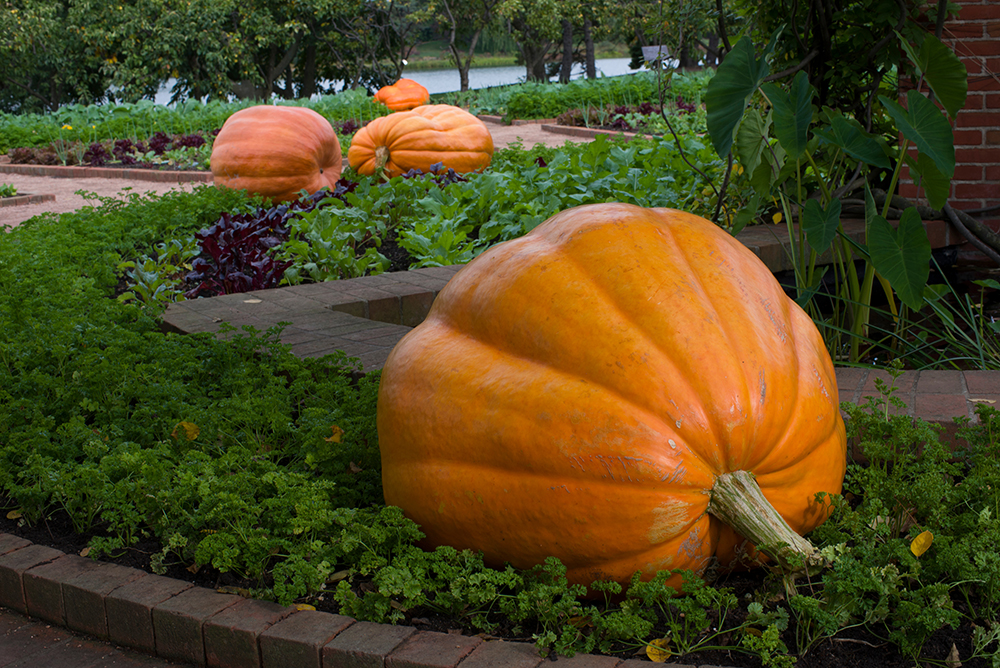
Unbelievable, yet real: Atlantic Giant pumpkins (Cucurbita maxima ‘Atlantic Giant’) adorn beds of parsley, chard, and heirloom root vegetables.
But the giant pumpkins are just one example of the diverse Cucurbita garden art that we once grew in the Fruit & Vegetable Garden. While they seem to be called “squash,” “pumpkin,” and “gourd” interchangeably, there is actually a science to identifying these cultivars, and pretty much everything called “pumpkin” is really a squash—although “pumpkin” is most commonly used to describe those distinctive orange orbs.
Here are some fall beauties that we've been reminiscing about lately:
Cucurbita maxima are squash with softer rinds and flesh, growing on long vines with large, hairy leaves. Harder-skinned “winter squash” are typically Cucurbita moschata, including butternuts and acorn squash. They also have trailing vines and hairy leaves, but tougher flesh and rinds, and a ridged but still soft stem. Only Cucurbita pepo are considered true pumpkins, with tougher flesh and rinds, leaves that are downright prickly (not just hairy), and a woody five-sided stem.
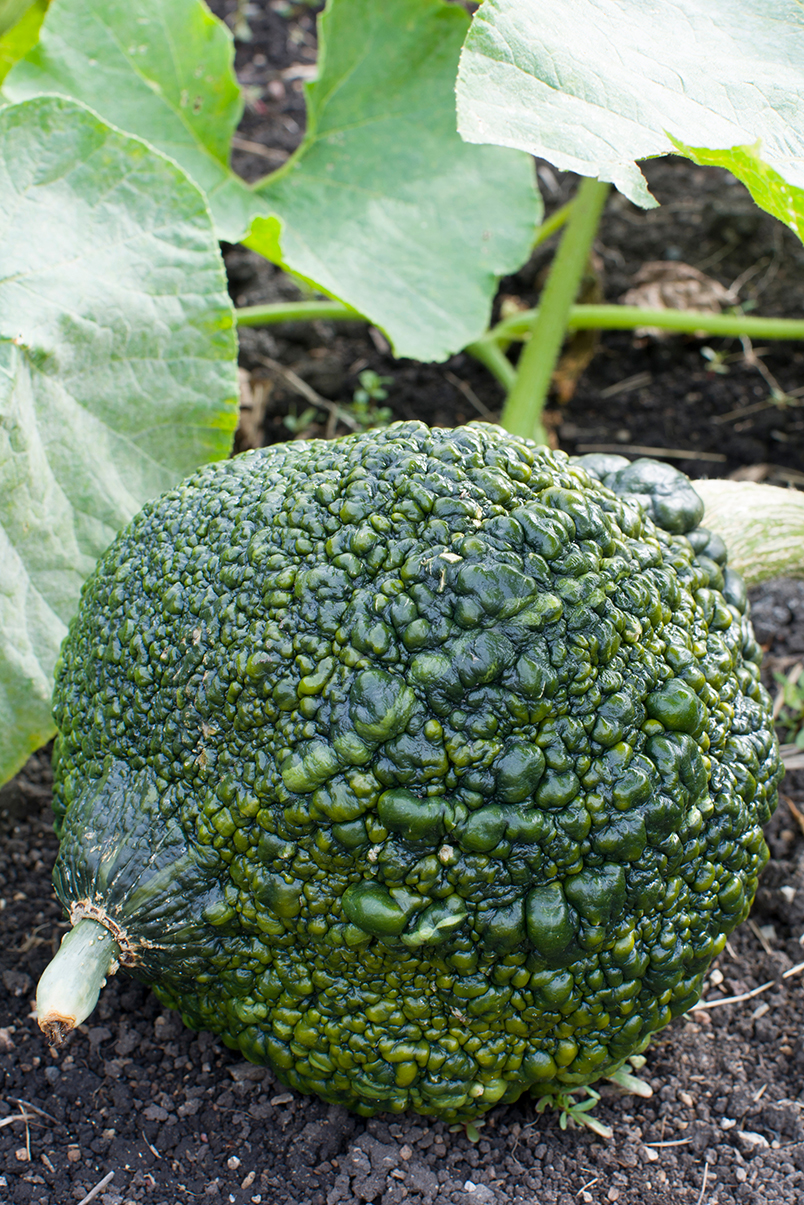
Warted hubbard squash (Cucurbita maxima ‘Chicago’s Warted’) is delicious now, and delicious later.
Cucurbita maxima ‘Chicago’s Warted’ is an heirloom developed by Budlong Gardens of Chicago. It was introduced by Vaughan’s Seed Store of Chicago in 1894. The 13-pound fruit are dusky olive green, and deeply wrinkled and warted with a classic hubbard squash teardrop shape. These gems have a fine-grained, sweet orange flesh. We used to plant them at the end of May—perfect timing for this 110-day crop. The hubbards are versatile winter squash that can be eaten right after harvest, or stored until the flesh sweetens around the new year.
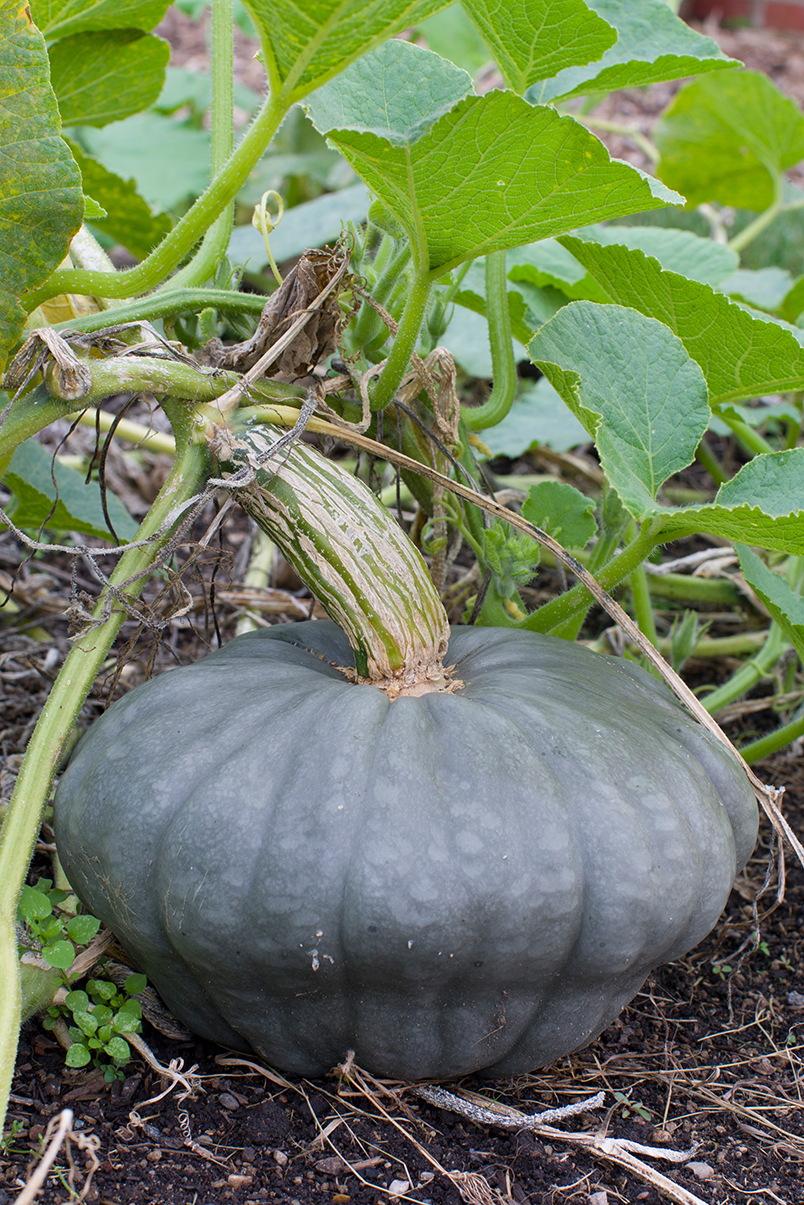
Australian blue squash (Cucurbita maxima ‘Queensland Blue') can be stored for an incredibly long time.
A member of the avant-garde Australian blue group of squash, Cucurbita maxima ‘Queensland Blue’ is not often seen growing in the field. While they hail from South America, the blue squash varietals grow equally as well in Australia (for which they are named) because of similar temperatures and length of growing season. This is a bottle-green keeper that, if properly harvested and well-cured with a 4-inch “handle,” will store for more than a year—maybe two. It is a fantastic eating-quality squash with smooth, rich, brilliant orange flesh.
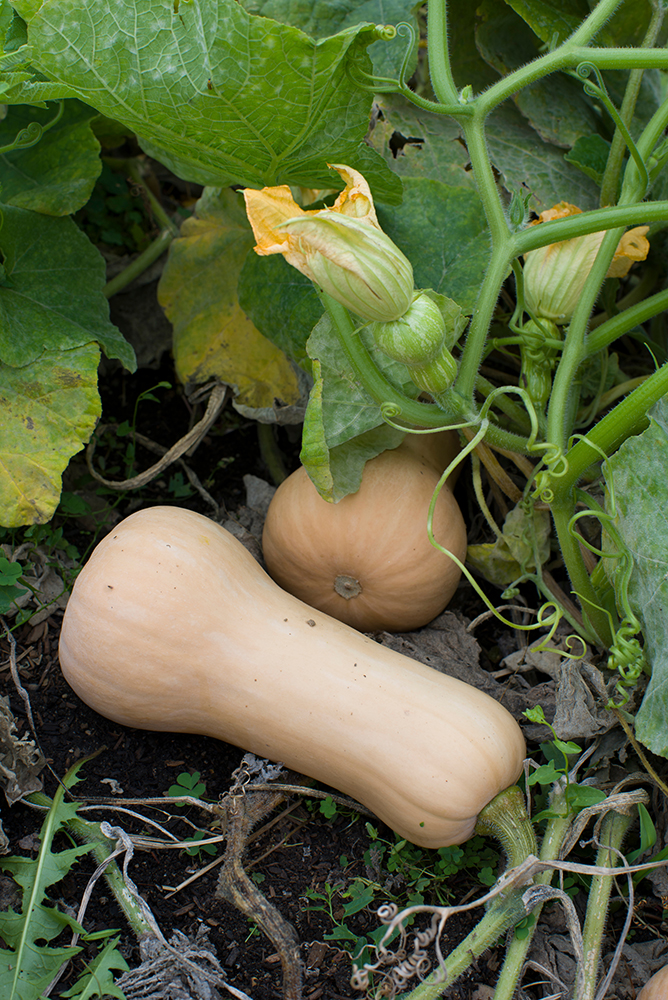
Waltham butternut squash (Cucurbita moschata ‘Waltham’) looks like a buff-colored peanut.
Cucurbita moschata ‘Waltham’ looks like a blocky, buff-colored peanut. The best time to plant it is in soil of mid-June, which squash of this species prefer. Waltham butternut is a uniform producer that must be harvested before the slightest touch of frost.
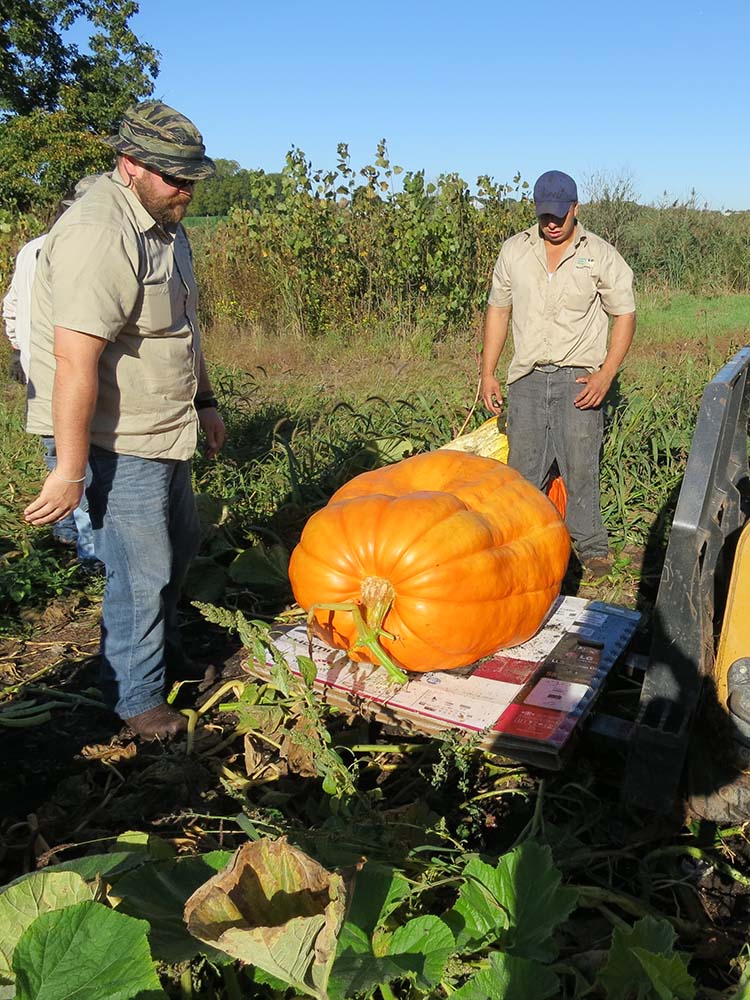
Moving an Atlantic Giant would take a full day of careful handling…and more than one forklift.
Make sure you have a forklift available before you think of growing Cucurbita maxima ‘Atlantic Giant’, which can easily grow in excess of 1,000 pounds. This squash that looks like a pumpkin surprisingly does not need much more room than the average pumpkin patch to grow, but organic compost can help boost its final size.
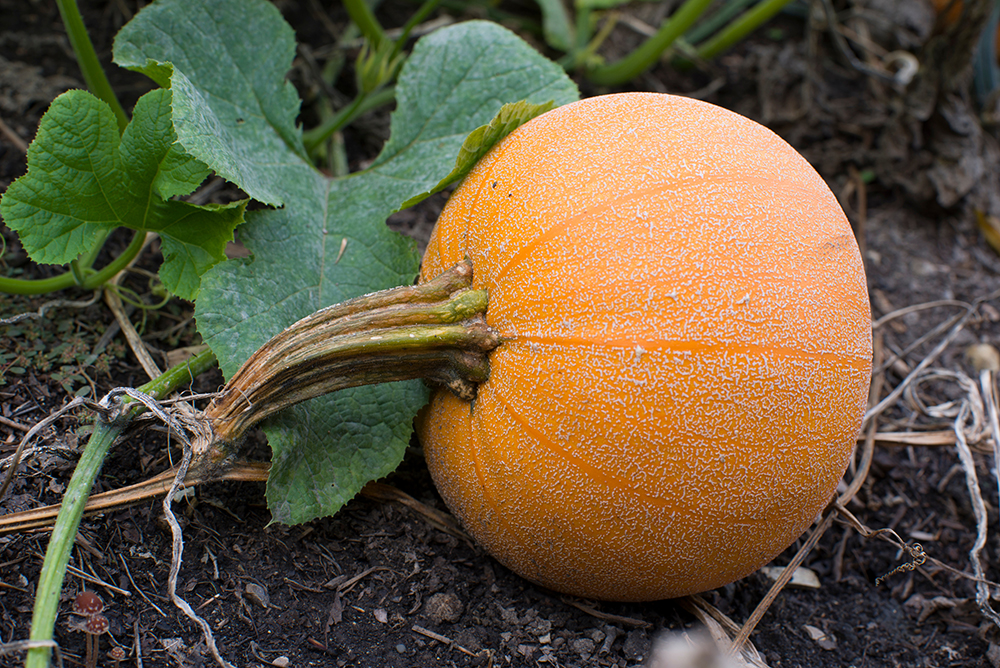
The champion of pie pumpkins: Cucurbita pepo ‘Winter Luxury’
Cucurbita pepo ‘Winter Luxury’ is diminutive in stature but mighty in taste. The fine, rough netting around the shell is a distinguishing feature of this 1896 heirloom. This is the gold-standard pie pumpkin that can be eaten right out of the garden. It won’t store as long as the other species.
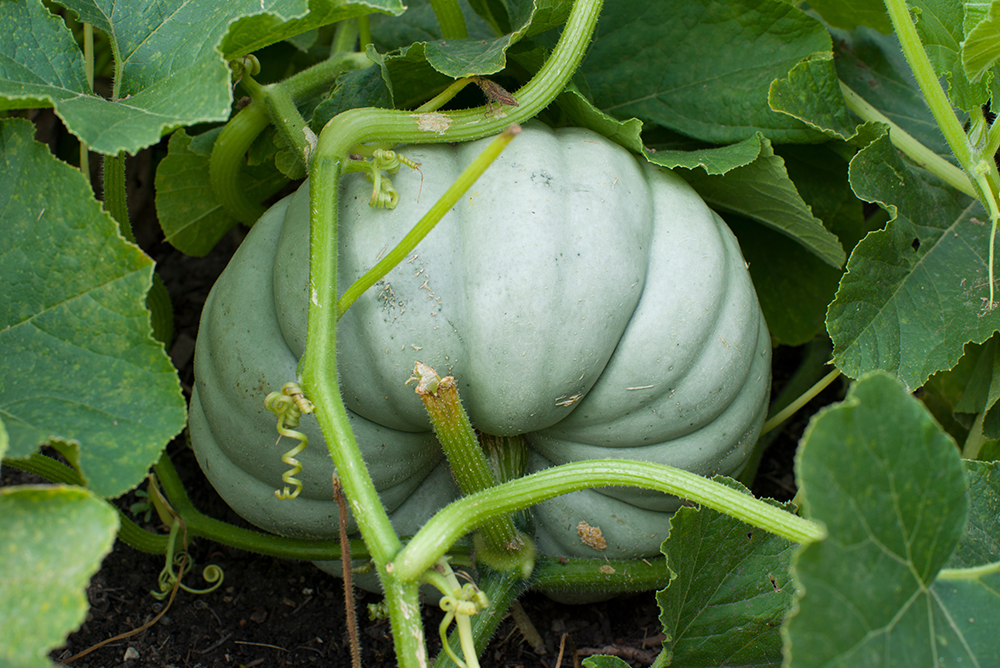
Stunning when sliced: Jarrahdale Australian Blue (Cucurbita maxima ‘Jarrahdale’)
Cucurbita maxima ‘Jarrahdale’—another unusual Australian blue—is a deeply-grooved, slate-gray squash with dense, sweet, deep orange flesh and a thin skin.
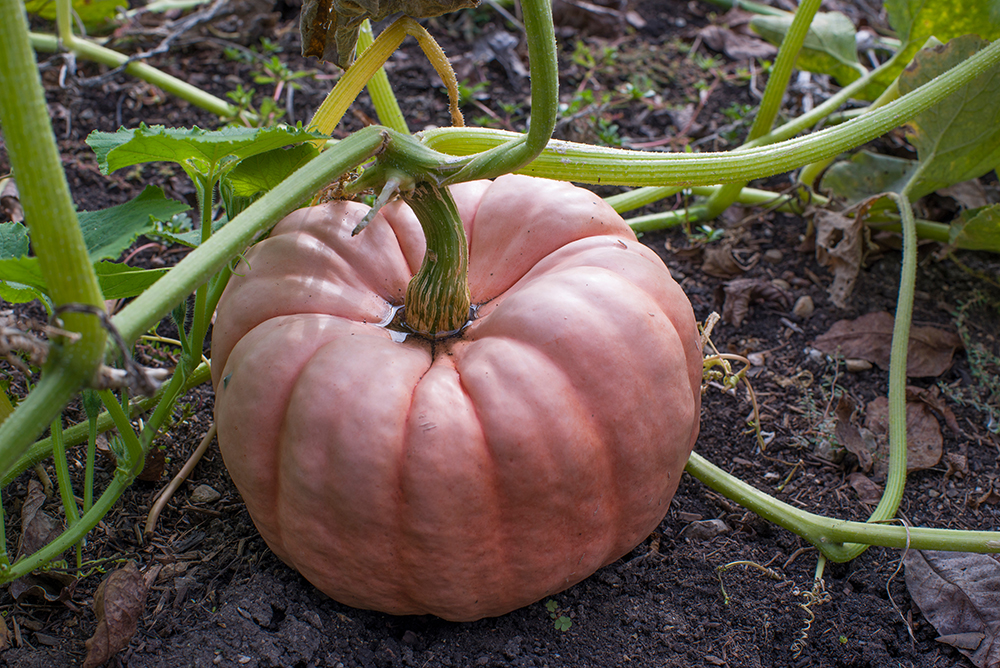
Purchase Porcelain Doll (Cucurbita moschata ‘Porcelain Doll’) seed from Pink Pumpkin Patch Foundation.
Cucurbita moschata ‘Porcelain Doll’ is a pink "cheese" pumpkin that has become the symbol of breast cancer awareness among pumpkin growers across America. Growing this decorative hybrid will ensure a donation to research is made.
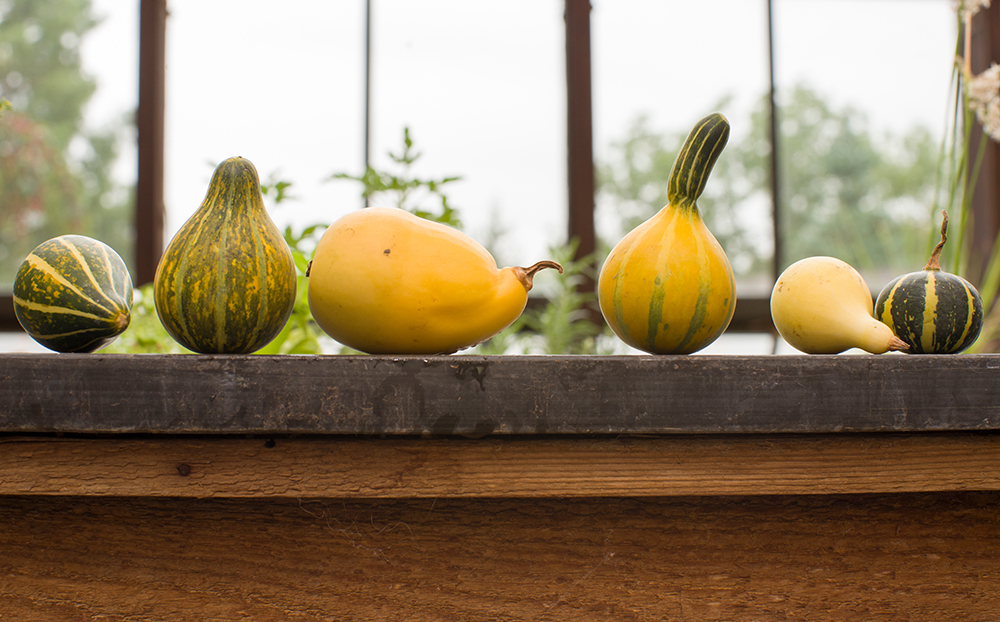
Grown for display, these Cucurbita pepo ‘Small Mixed’ gourds are generally better food for squirrels and raccoons.
There are three basic types of gourds in the Cucurbitaceae, or squash family: Cucurbita (ornamental squash), Lagenaria (utilitarian gourds used for things like containers or birdhouses) and Luffa (vegetable sponge). These Cucurbita pepo ‘Small Mixed’ ornamental gourds are just pumpkin varieties with poor flesh quality—either too fibrous or too watery for eating—but with beautiful color and texture for use in fall arrangements. They store better in a cool environment but can easily last indoors for seasonal holiday decorating.

